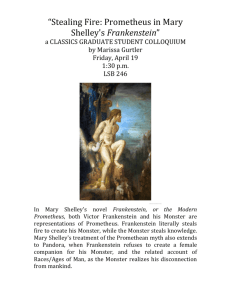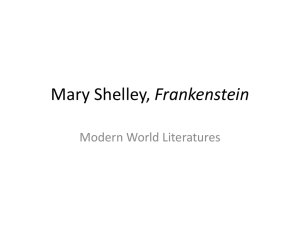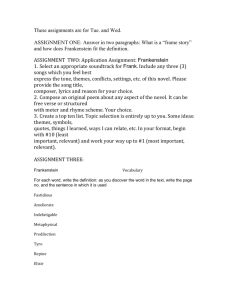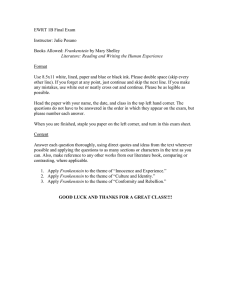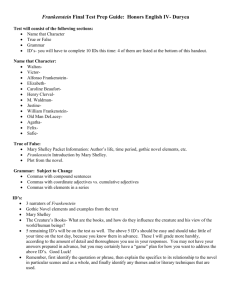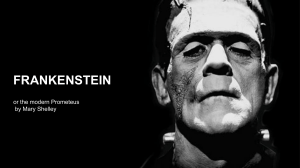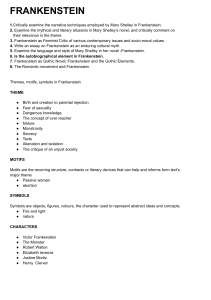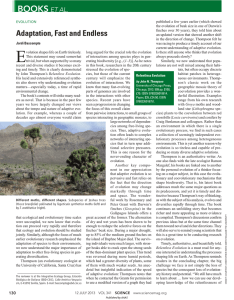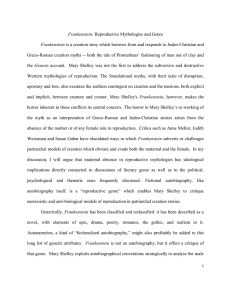Centennial Honors College Western Illinois University Undergraduate Research Day 2014
advertisement
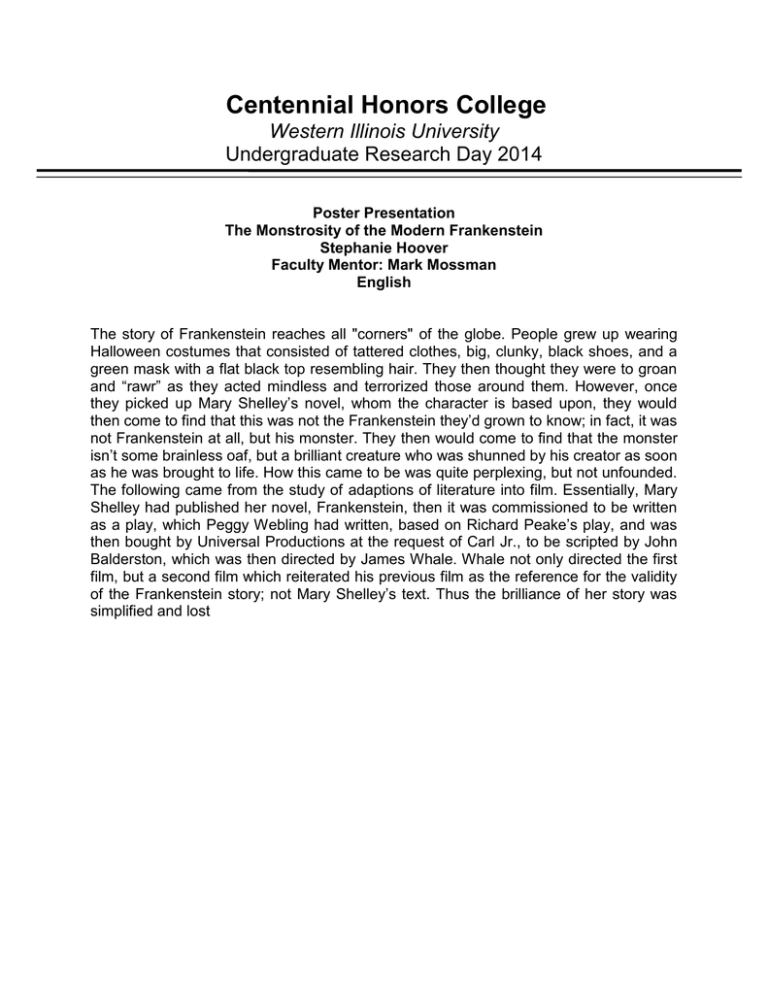
Centennial Honors College Western Illinois University Undergraduate Research Day 2014 Poster Presentation The Monstrosity of the Modern Frankenstein Stephanie Hoover Faculty Mentor: Mark Mossman English The story of Frankenstein reaches all "corners" of the globe. People grew up wearing Halloween costumes that consisted of tattered clothes, big, clunky, black shoes, and a green mask with a flat black top resembling hair. They then thought they were to groan and “rawr” as they acted mindless and terrorized those around them. However, once they picked up Mary Shelley’s novel, whom the character is based upon, they would then come to find that this was not the Frankenstein they’d grown to know; in fact, it was not Frankenstein at all, but his monster. They then would come to find that the monster isn’t some brainless oaf, but a brilliant creature who was shunned by his creator as soon as he was brought to life. How this came to be was quite perplexing, but not unfounded. The following came from the study of adaptions of literature into film. Essentially, Mary Shelley had published her novel, Frankenstein, then it was commissioned to be written as a play, which Peggy Webling had written, based on Richard Peake’s play, and was then bought by Universal Productions at the request of Carl Jr., to be scripted by John Balderston, which was then directed by James Whale. Whale not only directed the first film, but a second film which reiterated his previous film as the reference for the validity of the Frankenstein story; not Mary Shelley’s text. Thus the brilliance of her story was simplified and lost
